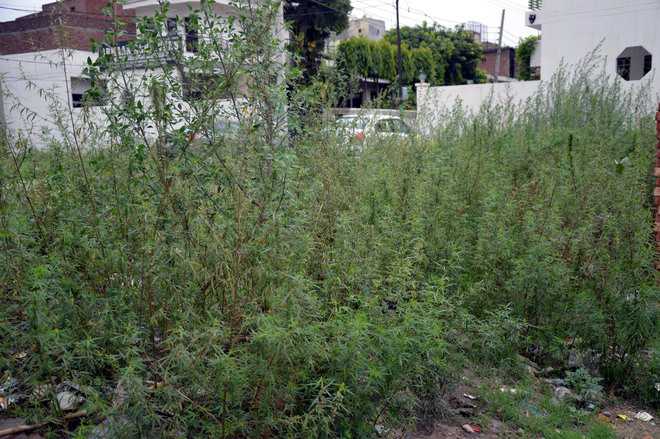Summer brings a whole new “crop” of weeds to the Southeastern coastal plain. Clearly, weeds that thrive now are tolerant of high temperatures, defined in biology as above 86 degrees. Many summer weeds also tolerate drought.
Many gardeners have a troublesome weed that is particularly annoying because it is difficult to eradicate. My weed nemesis is common lespedeza (Kummerowia striata, formerly named Lespedeza striata). Lespedeza grows prostrate, i.e., very low to the ground, in dense patches of a few to many plants. The more plants in a patch, the smaller each plant is.
Lespedeza, a legume, captures nitrogen, so the patches appear dark green in a centipede lawn that has not been overfertilized.
In the fall, common lespedeza will produce small, pink to lavender flowers. An interesting adaptation is some flowers never open, because they are self-fertile, while others open to allow cross-pollination with other common lespedeza plants.
In my experience, herbicide mixtures marketed for Southern lawns are not very effective against lespedeza. Several specific herbicides are available to treat lespedeza, but each one must be used carefully around other plants

Credit: www.postandcourier.com
Dollar weed
Dollar weed (various species of Hydrocotyle) is a troublesome weed. The large, round green leaves on single stalks are unmistakable in the Lowcountry. They show up in areas that remain wet after a rain but will also invade well-drained spots as their white, fleshy rhizomes (horizontal roots) spread many feet.
Eradication of dollar weed is difficult (https://bit.ly/2IxLhXc). The rhizomes grow about 1 inch deep in soil, just deep enough to make pulling difficult. The rhizomes are brittle and break easily. I am happy when I can pull up a six-inch-long piece.
Deer occasionally eat dollar weed and leave the petioles (leaf stalks), but they don’t eat enough to be a useful biological control.
The herbicide sold as Image is reportedly more effective against dollar weed than other lawn herbicides. In my yard, Image turned dollar weed yellow, but the control lasted only one season.
In areas not planted to grass, e.g. mulched beds, spraying glyphosate, a systemic herbicide, on the undersides of leaves will kill leaves quickly. The undersides of dollar weed leaves are not waxy like the tops, so the herbicide penetrates better.

Credit: www.postandcourier.com
Chamber bitter
Chamber bitter (Phyllanthus urinaria) is a deceptive weed. It looks relatively harmless with rows of leaflets arranged along a main leaf axis like a miniature mimosa tree. Hidden under the leaves, though, are dozens of tiny round fruits filled with tinier seeds. Even plants not much more than 1 inch tall will produce seeds.
Chamber bitter seedlings will grow in spaces between paving stones and other hard-to-reach areas. In landscape beds and lawns, this weed develops a large, fibrous root system that holds a ball of soil if weeds are pulled when the soil is moist.

Credit: www.postandcourier.com
Spotted and prostrate spurges
The common names of two local spurges come from their botanical names. Spotted spurge (Euphorbia maculata) has one reddish spot in the middle of each leaf. Both prostrate spurge (Euphorbia prostrata) and spotted spurge have prostrate reddish stems.
Plants of both species have oval, dull green leaves and tiny, pinkish flowers that nestle in the axils, the junction points of leaves and stem.
Another common name for prostrate spurge, prostrate sandmat, indicates how drought tolerant these species are. They are often found growing in the cracks of sidewalks and curbs. Plants in these spots can be dispatched with a dose of glyphosate, which should be applied before they flower.
Weed management
To summarize, turf herbicides, which generally are a mixture of three different active ingredients, can be sprayed once or twice per year, but not more without risk of injuring lawns. Nonselective herbicides, such as glyphosate, can be used for weeds that are not close to other plants.
Nonchemical weed management includes using mulch or landscape fabric to block weed seed germination. Weeds often emerge after soil is tilled or disturbed, as when a new bed is installed. If weeds are eliminated before they produce seed, and the soil is left undisturbed and mulched, the bed should remain relatively weed free.
Anthony Keinath is professor of plant pathology at the Clemson Coastal Research & Education Center in Charleston. His expertise is in diseases of vegetables. He is also an avid gardener. Contact him at tknth@clemson.edu.




